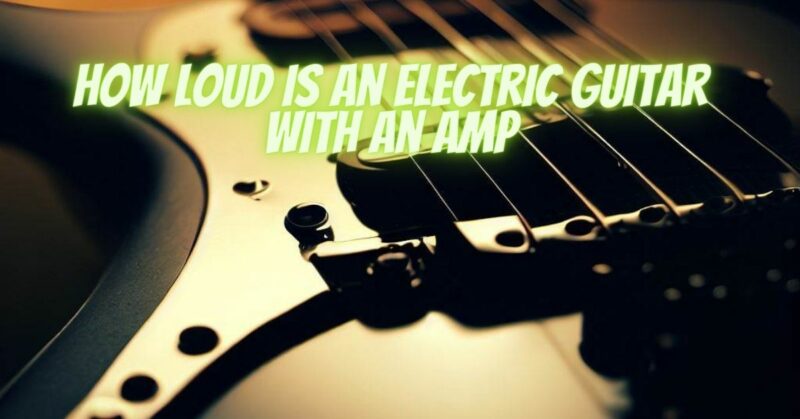Electric guitars are renowned for their ability to produce loud, amplified sound when connected to an amplifier. However, the exact volume levels achieved with an electric guitar and amp combination can vary based on multiple factors. In this article, we will explore the volume range of an electric guitar with an amplifier, discussing the variables that influence volume levels and considerations for guitarists.
- Amplifier Power and Settings: The power rating of the amplifier significantly affects the potential volume output of an electric guitar. Higher-wattage amplifiers generally have more headroom and can produce louder sound levels. Additionally, amplifier settings such as the master volume, gain, and EQ can also impact the overall volume.
- Speaker Configuration and Efficiency: The speaker(s) within the amplifier play a crucial role in determining the volume output. Amplifiers with larger speakers or multiple speaker configurations can generally produce louder sound due to their increased surface area and cone excursion capabilities. Speaker efficiency, measured in decibels (dB) per watt, also affects the overall volume potential.
- Guitar Pickup Output: The output level of the guitar’s pickups contributes to the volume output when connected to an amplifier. Higher-output pickups can drive the amplifier more effectively, resulting in a louder sound. Different pickup types and configurations, such as single-coil or humbucker pickups, can have varying output levels and tonal characteristics.
- Playing Technique: The volume produced by an electric guitar with an amp can also be influenced by the guitarist’s playing technique. Strumming or picking the strings more aggressively, increasing the guitar’s attack, can result in a louder sound. Similarly, techniques such as palm muting or using a lighter touch can decrease the volume output.
- Room Acoustics: The acoustic properties of the room or venue where the electric guitar is played affect the perceived volume. Factors such as room size, shape, and materials can impact sound reflections and resonance, resulting in variations in volume levels. In smaller, acoustically reflective spaces, the sound can appear louder due to increased reverberation.
- Hearing Protection: It is important to consider hearing protection when playing an electric guitar with an amplifier at high volumes. Prolonged exposure to loud sound levels can potentially damage hearing. Use of earplugs or specialized musician’s earplugs can help attenuate the volume while preserving the tonal characteristics and dynamics of the sound.
- Considerations and Etiquette: When playing with an electric guitar and amp, be mindful of your surroundings and respect volume regulations and guidelines. Ensure that the volume is appropriate for the venue, rehearsal space, or your personal practice environment to maintain a comfortable listening experience for yourself and others.
Conclusion:
The volume of an electric guitar with an amplifier can vary based on several factors, including the amplifier power and settings, speaker configuration and efficiency, guitar pickup output, playing technique, room acoustics, and personal considerations. While electric guitars have the capability to produce high volume levels, it is important to use appropriate hearing protection and be mindful of others in your playing environment. Experimenting with different settings and techniques allows you to find the optimal balance of volume and tone for your desired musical expression.


